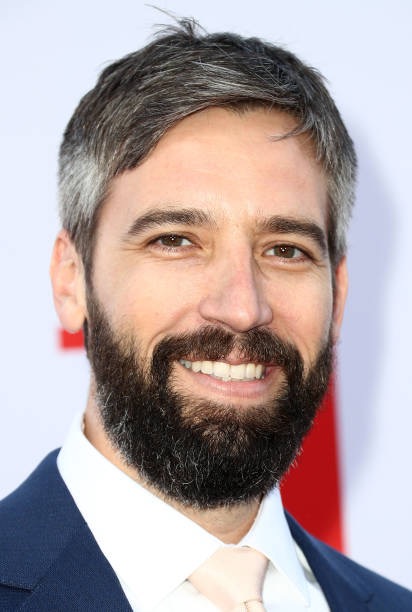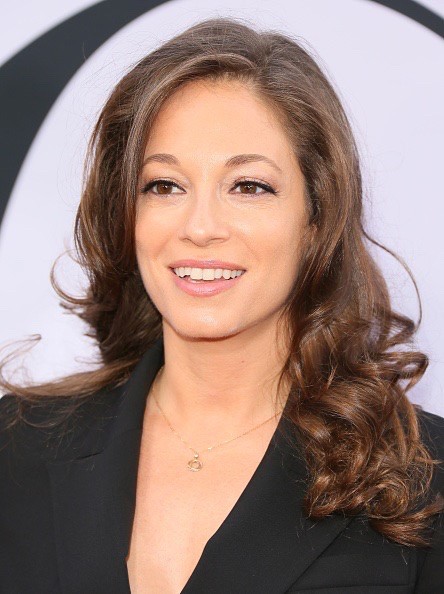It all started when screenwriters Bill Holderman and Erin Simms each sent their mothers the very NSFW novel Fifty Shades Of Grey – steamy, provocative film by many standards at the time. They didn’t aspire to write a watered down version of the iconic novel, but they used it as a starting point. Spurred by the idea of frank sex talk by woman of a certain age, the writers set out to write Book Club in 2018. Nearly five years later, their equally rebellious follow-up tracks Diane (Diane Keaton), Vivian (Jane Fonda), Carol (Mary Steenburgen) and Sharon (Candice Bergen) taking their discussion of The Alchemist to Italy. Bill and Erin spoke with Creative Screenwriting Magazine about the surprise success of their film.
Hotel magnate Vivian (Fonda) allows herself to get serious with a man after a lifetime of zero commitments, recently widowed Diane (Keaton) builds a life outside of the needs of her husband and children, Federal Judge Sharon (Bergen) pursues a personal life outside of work, and Carol (Steenburgen) gets to the bottom of intimacy issues in her otherwise happy marriage.
“I think it was really fresh idea back in 2018,” proclaims Holderman of the first Book Club movie. “I think no one had seen this caliber of actress in a movie together. It’s (women in their 70s and 80s) an underserved demographic. I think that it also caught the zeitgeist of these women reading Fifty Shades Of Grey,” he continues.
Although the “retired” set is the core audience for Book Club: The Next Chapter, it isn’t the only audience. “Our characters are over sixty-five, but I was much younger. I just wrote roles for my favorite actresses. These were the people that I watched growing up,” adds Erin Simms. She considers the audience to be much broader – thirty-five and up.
“The way we approach writing, and particularly these characters and these stories, is not about the characters specifically as women of a certain age. They’re dealing with things that are very human and things that people deal with when they’re in their twenties, thirties, forties, fifties and beyond,” declares Holderman.
“I think for us, it’s that humanity that we try to really breathe into the movie that hopefully is the reason why it translates and connects with a wide audience that’s not just the age of the characters.” It’s really targeting not so much their age, but a stage of life or certain events like getting married, retiring, or becoming widowed.
The Community Of Book Clubs
We asked the screenwriters about the magnetic nature of book clubs that draws and unites readers. “I think that book clubs are predominantly female. It’s a place for busy women to have an excuse to finally take time for themselves and get together,” says Simms. “Everyone jokes that their book club is less about the book and really more about connecting, chatting, gossiping and drinking,” adds Simms.
Book clubs are a time when these women can prioritize themselves and spend quality, uninterrupted time with their friends. People in their younger years generally have more avenues for social interaction which dissipate as they get older. They’re looking for things like book clubs “that will provide that connection, that sense of community, and that sense of belonging they’re looking for in the adulting part of our lives,” adds Holderman.
Book clubs also allow for deeper conversation that extends beyond the pages of a book because each participant describes their connection to the text. Everyone’s read the book before each meeting, so there is a natural entry point into the conversation rather than engaging in unfocussed superficial chatting.

Bill Holderman
Book Club: The Next Chapter is a solid ensemble piece featuring four highly-individual women each with a complete story to tell. This presents its own challenges compared to having a single main character acting as the main driver of the story. These characters bounce off each other as their friendship deepens with the dynamics of expansion and contraction. “They’re all the main character of their storylines. There isn’t one dominant character. I think there’s moments where each of them is the dominant character. For me, it’s probably one of the purest ensembles because they all get their due,” muses Holderman. “As friendships go, there are real symbiotic and synergistic elements to it.”
“What we loved about our characters was creating very real but unique women who were all bringing something different to the table and weren’t competing with each other,” says Simms. “Each one brings their very specific life experience. They’re all very different, but they all respect each other and agree on the main things in life.”
Friendship is showing up, supporting, and pushing each other
A Question Of Love
The theme of expression of love is also prevalent in the film. Although many films default to romantic love, the love in friendships can be equally potent. “The truth is that female friendship and the bond that they have supersedes any connections they may have outside of their group, whether it be their marriage or elsewhere,” declares Holderman. He cites Michel de Montaigne who theorized that friendship is one of the few bonds driven by choice rather than responsibility. Childhood friendships are often longer than spousal relationships. “I’m probably closer with my friends than I am with my family,” points out Simms. “They know all my secrets.”
“Friends are the people you keep coming back to… the people you keep opting into and aren’t forced to continue being with. You both choose each other over and over again for your whole life,” she continues.
“Once you find your true friends, you can find a romantic partner,” adds Holderfield. There’s a sequential nature to this.
Despite the love on friendships depicted in Book Club: The Next Chapter, the romantic relationships with the male characters are also important. “Somebody said that the men of Book Club are the women of other movies,” claims Simms. Building a movie about women requires a set of story choices to keep the story humming. Although the romantic relationships didn’t take often the center stage, “they bookend the movie and are important to the women,” asserts Holderfield.
“We do like playing with the possibility that the men actually love who their women are, aren’t trying to control them, and aren’t trying to break up their friendship,” continues Simms.
Writing The Next Chapter
The first Book Club film grossed over $100 million worldwide, so a sequel was on the cards from a commercial standpoint. From a creative perspective, the story needed to organically evolve into a sequel. Erin Simms and Bill Holderman tied up all the loose ends in the first movie. They didn’t sign off with a cliff-hanger that conveniently lends itself to a sequel. It needed a genuine story reason to exist.
The Next Chapter began with the decision to place the book of endless self-discovery, The Alchemist by Paulo Coelho, on the reading list. “The whole story of the Alchemist, the journey and the agency that we each have in our own lives, and the ability to, no matter what age or life stage we’re in, make choices, put a rudder in the water and steer our canoe in the direction we wanted to go drove the second film,” says Holderman. “It was a thematic expansion from the first movie.” If this hadn’t been determined, there would never have been a sequel.
Erin Simms declares that the initial drafts of the sequel didn’t include the male characters. But Diane (Keaton) balked at the thought of her on-screen boyfriend Mitchell (Andy Garcia) not being in the film.
Jane Fonda, Mary Steenburgen, Candice Bergen, and Diane Keaton discussed the prospect of a sequel before the first movie was even released because they saw the potential in it. It also gave them a chance to go to Italy.
The writing duo had also read an article by Mary Steenburgen who discussed how people of a certain age were written off and weren’t expected to try new things. She chose to directly challenge the notion that “It’s too late.”

Erin Simms
Simms notes that the four women are only together for seventeen pages during the first movie in three book club scenes. “That’s where the magic is.”
The Next Chapter gives them the opportunity to deepen the dynamics and relationships that were set up in the first film. “For this one, we let those friendships take that next phase and see how friends support, encourage, and inspire each other, especially when they hit the road and have their eyes opened by their experiences,” adds Holderman.
“I was pretty interested in the storyline about getting married, not getting married, and the different sort of perspectives of that,” says Simms of Arthur’s (Don Johnson) marriage proposal to Vivian. “Your happy ending is your own to write.” She wanted to explore the pressures that society places on women to marry at every stage of their lives.
Book Club: The Next Chapter is about making choices rather than having regrets.
Outlining the screenplay involved creating four solid character arcs on a whiteboard. “And when you have four characters, there’s a there’s a lot more math involved in terms of making sure that the story architecture is all working and helping the overall experience for the audience,” asserts Holderman.
Then there were key story elements that affected all the four women. Firstly, the screenwriters had to get them to Italy in an efficient, organic, and entertaining way.
There was also a matter of not fully revealing the plan during their road trip to Tuscany until later in the film. It was an intricate balancing act of teasing, misdirecting, and finally stating the plan. Despite their hiccups on route, they stay true to themselves by making the choices that are right for them. “We didn’t want to create false conflict between them,” says Bill.
It was imperative that The Next Chapter felt fresh and didn’t require audiences to have seen the first one in order for them to fully appreciate it. It had to stand alone.
To conclude, we asked Erin Simms and Bill Holderman some defining dialogue for each character. “‘I made pasta in a boat’ is a line from Sharon that she says to her friend that encompasses a little bit of her; that rascal side of her, which is really a fun part of that character.”
“I don’t want to be a wife,” defines Vivian. “She’s someone who’s relentlessly authentic and stands in a wedding dress at an altar across from the man that she’s not trying to break up with, but trying to express how much she loves him, and is saying, ‘I’m here for you, but let me just tell you that my truth is I don’t want to be a wife.'”
Diane says, “‘And then we get older and life starts to silence us.’ She’s been fighting and she’s now in this moment and she’s gonna she’s gonna listen to all of those inspiring things, take action in her life and tell him that the rest of their lives starts now, so what are we waiting for.”
Carol is best characterized in a telephone conversation with Bruce (Craig T. Nelson) when she says, “Our adventure is not over yet.” The quartet believe their futures are bright and theirs to create.
